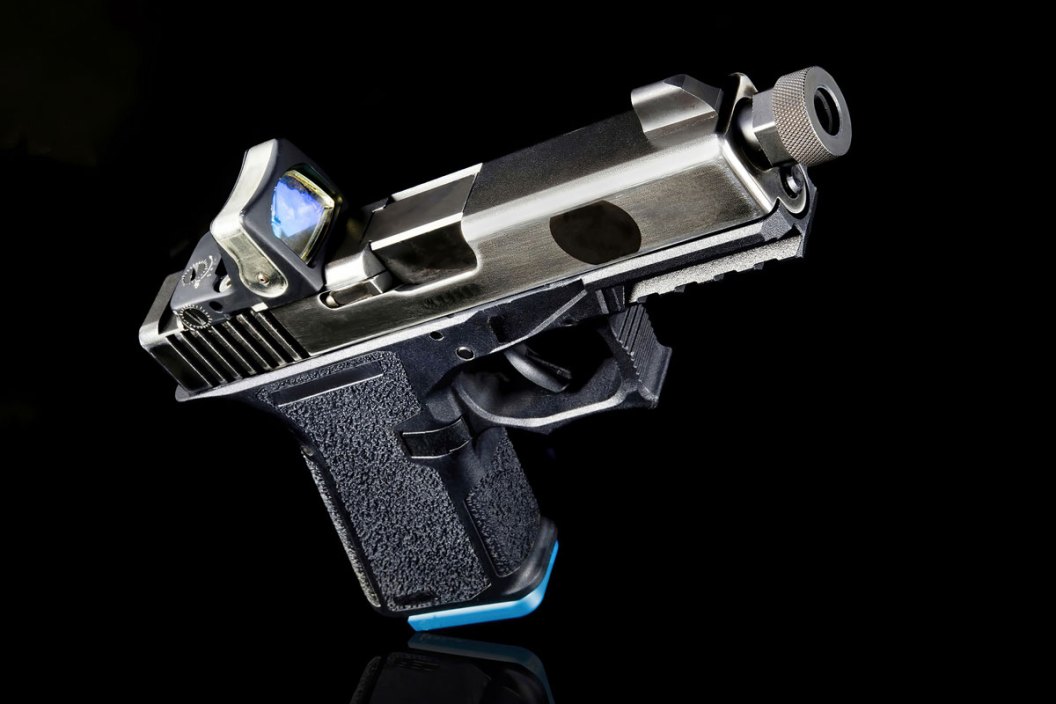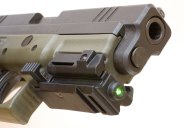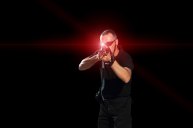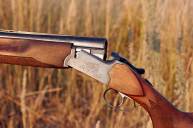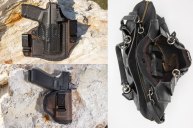Getting a pistol optic zeroed isn't difficult, but it can be intimidating for first timers.
Sighting in a handgun is pretty straightforward, but it can be a bit intimidating for new gun owners.
Additionally, it's an essential step for any gun that will be used as a self-defense weapon, concealed-carry EDC, or home-defense gun.
Here's a quick guide that will help a lot when zeroing your pistol for the first time, whether you get a gun with irons or an optic.
Iron Sights
Most handguns still come with iron sights or fixed sights. If you don't have an adjustable rear sight, you'll need a couple things to get your sights spot on.
The front sight on a handgun, like a Glock, isn't moving, so the only adjustment you'll only be making windage adjustments. Iron sights are typically installed in a handgun's slide via dovetail cuts in the steel.
If your shots are hitting too far to the left, use a sight pusher or a punch wrapped in tape and rubber mallet to tap the rear sight to the right in the dovetail of the slide. If your shots are hitting to the right, move the slide to the left. Do this in small increments until your point of aim matches your point of impact.
If the rear sight is adjustable, you do the same thing, but you will be able to move the rear sight right or left with a small screwdriver.
If you have night sights with tritium inserts for low-light shooting, take care not to damage them with your tools.
Handgun Red Dots and Reflex Sights
More and more handguns are either coming with red dot optics or reflex sights mounted on the slide or with optics-ready slides milled to accept mounts for popular pistol red dots.
Red dots offer a number of advantages, including quick target acquisition and a shallower learning curve compared to iron sights. For new shooters, red dots are simply much easier than training to get a perfect sight picture with irons. Red dot pistol sights also allow people to naturally shoot with both eyes open more easily, offering the shooter a field of view, which is important for situation awareness in a defensive situation.
When zeroing a handgun optic, you start by taking a close shot inside seven yards to see how far off your red dot is. There will be two adjustment screws on the sight, one for elevation, one for windage. Adjust it so the point of aim matches the point of impact at close range, and then move the target farther out and repeat until the optic is zeroed at the desired distance.
Keep in mind that the actual dot or reticle in a red dot optic can be different sizes, anywhere from 1 MOA to 5 MOA. The fatter the dot, the easier it will be to see when aiming, but the less precise it will be, especially at longer ranges.
Revolvers and some larger automatics, like the Magnum Research Desert Eagle, will have a Picatinny top rail, in which case a red dot or scope must be used with the proper Picatinny mount.
Some handguns and optics combos will allow you to co-witness the reticle with the iron sights, meaning when you look through the window of the optic, you will see the red dot lined up with the iron sights.
Be sure to sight in a defensive handgun using the ammo that it will be loaded with, not range ammo with a different bullet weight.
NEXT: REMEMBERING 'PIG NOSE,' THE 10-FOOT, 700-POUND STURGEON
WATCH
